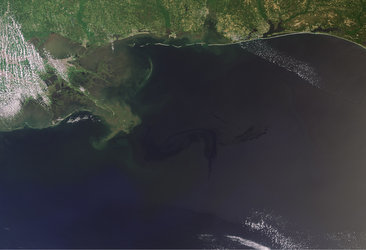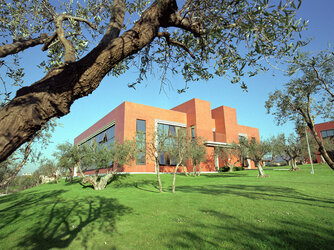ESA and oil industries explore applications from space
Members of the space and oil and gas sectors have come together in the first meeting of its kind to discuss current Earth observation capabilities and the evolving information requirements within the oil and gas industry.
While remote-sensing experts and specialist value-adding companies shared information about routine and innovative Earth observation-based services, industry experts outlined the challenges in their present and future operations and provided examples of important environmental parameters needed.
"This is the first time that we have had this level of collaboration between ESA and the oil and gas industry," said Dr Richard Eyers, Senior Remote Sensing Consultant for Shell International.

"We are increasing our level of mutual understanding by finding out what technologies are available to us and letting ESA know what information we need."
Jean-Paul Xavier, a remote sensing expert for the French oil company Total, said the industry’s main need now is value-added products.
"We are at a point where we have lots of data but need more precise parameters, such as temperature, subsidence and land cover change," Xavier said. "As an industry we share the same problems and are looking for solutions. This is an important ESA workshop because by combining oil companies with service providers, we are able to discuss these challenges."
Kjell Morten Sviland, a principal engineer for mapping and geographic information at Statoil, Norway’s biggest oil and gas producer, wanted to ensure his company is aware of all the Earth observation-based services offered.

"We have requested a list of service capabilities that are currently available," he said. "We also communicated our future requirements to ESA and the value-adding companies."
Three topics were addressed throughout the meeting: exploration, environmental sustainability and infrastructure and transportation.
A series of measures was identified at the workshop that can be taken within the oil and gas and service-providing communities to consolidate and expand the use of remote sensing across the sector.

Presentations from the meeting are available via the workshop website, and a brief report will be made available by the end of the month.
The workshop, held at ESA’s Earth observation centre (ESRIN) in Frascati, Italy, on 14 and 15 September, was attended by 120 participants, with at least 40 from the oil and gas industry, including the majors such as AGIP, BP, ENI, Petrobras, Statoil, Shell, Total, ExxonMobile, Chevron and Woodside.
It was jointly organised by ESA, oil companies, including Shell, BP, Total and Woodside, service-providers and the European Association of Remote Sensing Companies.















 Germany
Germany
 Austria
Austria
 Belgium
Belgium
 Denmark
Denmark
 Spain
Spain
 Estonia
Estonia
 Finland
Finland
 France
France
 Greece
Greece
 Hungary
Hungary
 Ireland
Ireland
 Italy
Italy
 Luxembourg
Luxembourg
 Norway
Norway
 The Netherlands
The Netherlands
 Poland
Poland
 Portugal
Portugal
 Czechia
Czechia
 Romania
Romania
 United Kingdom
United Kingdom
 Slovenia
Slovenia
 Sweden
Sweden
 Switzerland
Switzerland

































